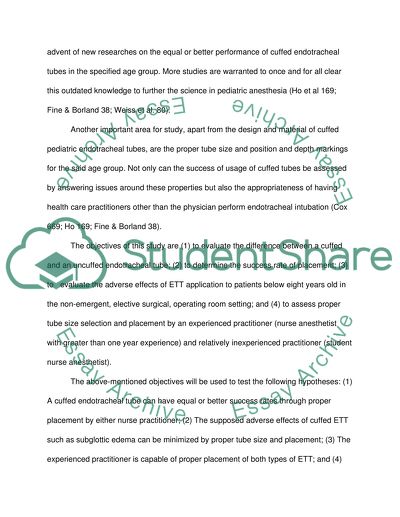Cite this document
(The Effects of Uncuffed Endotracheal Tubes versus Cuffed Endotracheal Research Proposal, n.d.)
The Effects of Uncuffed Endotracheal Tubes versus Cuffed Endotracheal Research Proposal. Retrieved from https://studentshare.org/medical-science/1523711-pediatric-tracheal-tubes
The Effects of Uncuffed Endotracheal Tubes versus Cuffed Endotracheal Research Proposal. Retrieved from https://studentshare.org/medical-science/1523711-pediatric-tracheal-tubes
(The Effects of Uncuffed Endotracheal Tubes Versus Cuffed Endotracheal Research Proposal)
The Effects of Uncuffed Endotracheal Tubes Versus Cuffed Endotracheal Research Proposal. https://studentshare.org/medical-science/1523711-pediatric-tracheal-tubes.
The Effects of Uncuffed Endotracheal Tubes Versus Cuffed Endotracheal Research Proposal. https://studentshare.org/medical-science/1523711-pediatric-tracheal-tubes.
“The Effects of Uncuffed Endotracheal Tubes Versus Cuffed Endotracheal Research Proposal”, n.d. https://studentshare.org/medical-science/1523711-pediatric-tracheal-tubes.


